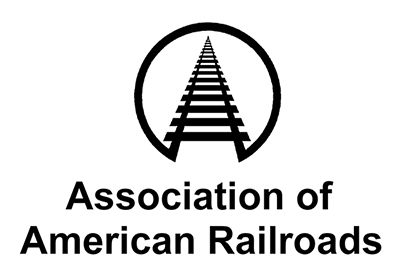U.S. intermodal shines while carloads decline in August, reports AAR
The month of August was a bit of a mixed bag for United States rail carload and intermodal volumes, with carloads down slightly and intermodal having its best volume month ever, according to data issued this week by the Association of American Railroads (AAR).
The month of August was a bit of a mixed bag for United States rail carload and intermodal volumes, with carloads down slightly and intermodal having its best volume month ever, according to data issued this week by the Association of American Railroads (AAR).
Carloads dropped 0.3%, or 4,571 carloads, compared to August 2016, coming in at 1,343,405. And seven of the 20 carload commodity categories tracked by the AAR saw annual gains in August, including: coal, up 25,926 carloads or 5.8 percent; crushed stone, sand & gravel, up 14,506 carloads or 12.1 percent; and metallic ores, up 4,550 carloads or 16.1 percent. Commodities that saw declines in August 2017 from August 2016 included: grain, down 24,565 carloads or 20.4 percent; motor vehicles & parts, down 10,321 carloads or 11.2 percent; and petroleum & petroleum products, down 8,362 carloads or 15.8 percent. This is the second straight month of slight U.S. carload declines.
When removing coal from total carload volumes, AAR said that carloads were down 30,497 carloads, or 3.4%, in August 2017 from August 2016 and excluding coal and grain, carloads were down 5,932 carloads, or 0.8%.
The average number of U.S. carloads per week, at 268,681, fell 0.3% annually. On a year-to-date basis through August, U.S. carloads, at 9.06 million, are up 393,428, or 4.5% annually compared to the same period.
“Rail traffic in August was a mixed bag, with gains in coal and sand, among other commodities, offset by declines in grain, autos, and crude oil,” said AAR Senior Vice President John T. Gray in a statement. “These results reflect the fact that different rail customer segments are always facing different market dynamics, including, during the last week of August, Hurricane Harvey.”
On the intermodal side, the 1,401,081 trailers and containers moved in August is up 5.6%, or 73,790 units, annually for the highest monthly tally ever, according to AAR data. What’s more the weekly average intermodal originations for August, at 280,216, represents the highest for any month in history for U.S. railroads, topping the previous best month from June 2015, which came in slightly below 280,000. And on a year-to-date basis through August, U.S. intermodal loadings are up 3.4%, or 309,302 units, annually at 9.35 million units, which also sets a new record for that timeframe, coming in ahead of 2015 by 0.3% or 21,003 units.
“Intermodal traffic has been picking up steam this year and is now growing at a pace of 5-6 percent, which is back to the twice the GDP or above benchmark growth rate we like to see after several slow years and following the drop in oil prices,” observed Bill Rennicke, partner at Oliver Wyman, a management consultancy. “The current trend suggests that truck capacity is tightening a bit and truck rates are climbing. New orders for Class 8 trucks are growing, but how much truck growth will be held back by driver shortages remains to be seen. Electronic logging regulations are supposed to take effect at the end of the year. Given the current anti-regulatory stance in Washington, however, anything could happen to withdraw these rules or postpone them.”
For the week ending September 2, AAR reported that U.S. carloads were down 5.9% annually at 257,077, and intermodal containers and trailers rose 4.2% to 277,063.
In addressing the impact of Hurricane Harvey on railroads, the AAR’s Gray noted that unfortunately floods, tornadoes, and hurricanes are a fact of life, and railroads have long experience dealing with them and their aftermath.
“Railroads know that the quicker they can safely restore service, the quicker affected communities can obtain food, water, and other necessities; that supplies needed for rebuilding can be brought in; that debris can be removed; and that rail customers can return their operations to normal,” he said. “In this regard, for railroads there is no alternative to long hours of very hard work in very difficult conditions, and that's what railroads have been putting in.”
The AAR added that is it not possible to determine the precise impact of Harvey on rail traffic, with the caveat that it “was clearly negative so far,” adding that the estimate for the area immediately affected by Harvey represents around 764,700 originated carloads in 2014, the most recent year for which data is available and equal to roughly 3% of total U.S. originations.













